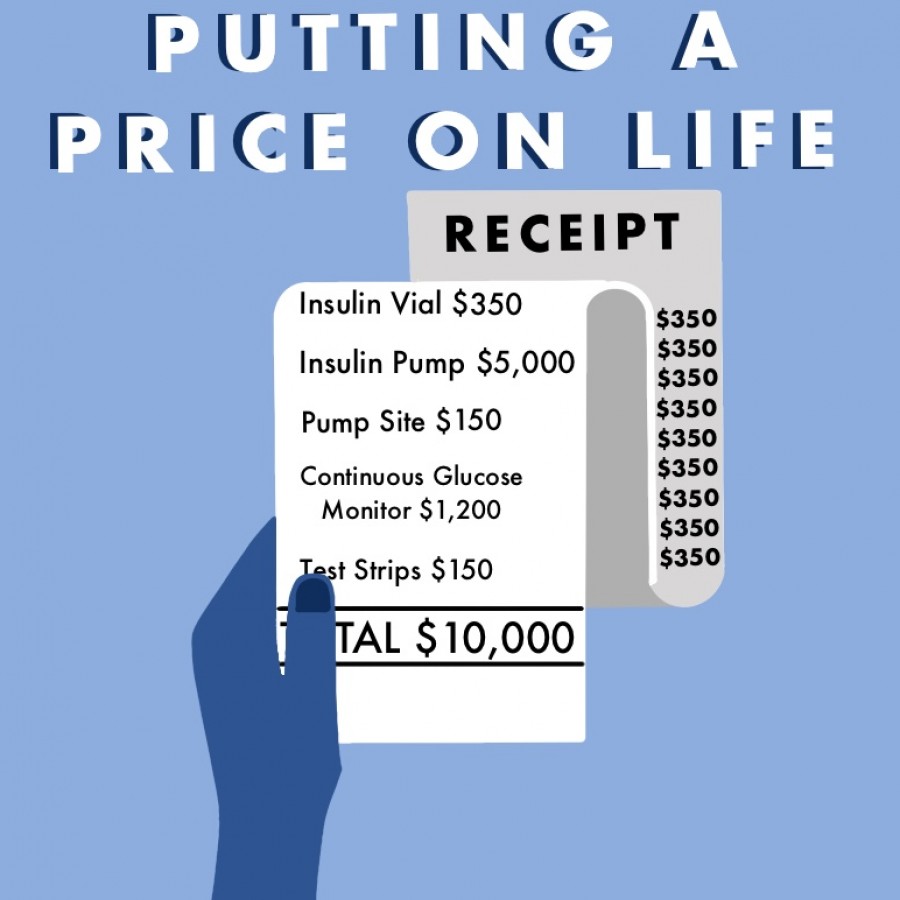November serves as National Diabetes Awareness Month (NDAM), with Nov. 14 marking Word Diabetes Day. The diabetic community uses this time as an opportunity to bring awareness towards the disease and advocate for improvements of the price and accessibility to necessary medical care, such as the life-saving hormone insulin.
While Type 2 Diabetics often have the opportunity to manage their condition through diet, exercise and lifestyle changes, Type 1 Diabetics are insulin-dependent, requiring insulin therapy, via injections or a pump, to live. This is due to the fact that Type 1 Diabetics no longer produce insulin, whereas Type 2 Diabetics do not properly utilize the insulin they produce.
Without insulin, Type 1 Diabetics face a severe complication: Diabetic Ketoacidosis (DKA). This condition occurs when the body is no longer able to properly utilize insulin to turn glucose into energy, forcing it to break down fat for energy and producing ketones.
Diabetic Voice, a magazine from the International Diabetes Foundation (IDF), reports on the interests of diabetics and has linked insulin insecurity to DKA. “The tragic loss of life from DKA can be prevented. If insulin became freely accessible and affordable, lives could be saved,” the site wrote. With insulin prices in the United States being 10 times as much as it is European nations, it has become difficult for many Americans to afford, leading one in four diabetics to ration insulin, or not taking sufficient amounts in order to make it last longer.
The implications of inadequate insulin do not stop with DKA; itcan have long-term consequences on the body. Dr. Ramarao Pradeep, an endocrinologist, shared the potential complications from not having enough insulin in the body. “Persistent high sugars will result in diabetic eye and kidney complications and potential loss of limbs.”
With insulin being a life-sustaining medication for over 1.5 million Americans, it has left many, including Type 1 Diabetic and senior Caden Kipper, wondering why insulin prices in the United States continue to soar exponentially.
The same vial of insulin in the United States is only a fraction of the cost in Europe, Canada or Mexico — something that has prompted many diabetics to travel across borders in order to “stockpile” the medication.
In 2019, Vermont senator Bernie Sanders led a caravan of diabetics to Canada to purchase cheaper insulin as a way to highlight the exorbitant costs of the drug in the United States. “How does it happen 10 minutes away from the American border in Michigan, people here are paying one-10th of the price for the vitally important drug they need to stay alive?” questioned the senator during his trip.
Like Sanders, Kipper has also expressed his outrage that insulin prices are astronomically high. “[Insulin] shouldn’t be that expensive, because for some people, it’s something that we need to live,” he voiced. “It functions as our pancreas and [Type 1 Diabetics] need insulin to live.”
Kipper, who has been living with diabetes since he was 5-years-old, is thankful that he is fortunate enough to afford his insulin. “I usually get two or three new vials of insulin every month and new [insulin pump] sites every 6 months from Medtronic,” he explained. With insulin vials and pump sites costing roughly $350 and $150, respectively, Kipper’s total cost could range from $700 to $1,200 a month, if he did not have insurance.
Although he is covered by his parents’ insurance now, Kipper does have his concerns for how he is going to afford it when he is 26, the age that children are no longer dependents of their parents’ insurance plans. “I’m nervous about it, but I’m hoping I can get insurance quickly so they will cover some of the cost,” he shared.
Like many other Type 1 Diabetics, Kipper has recognized a pattern of diabetics losing their lives due to not being able to afford their costly prescriptions.
This trend has prompted many state governments to enact a $100 price cap on a 30 day supply of insulin.
While similar legislation (IA HF2138 and IA SF2113) was proposed to the Iowa Congress in January of 2020 and passed through the Iowa House of Representatives in March, it failed in the Iowa Senate in June.
Despite the failure of this bill, Kipper hopes to see lower insulin costs and encourages legislators to continue to fight for it. “There needs to be some kind of law or something where insulin isn’t expensive at all,” he urged. “It needs to be affordable for everyone that has diabetes.”







